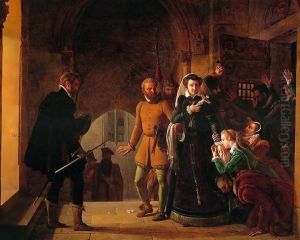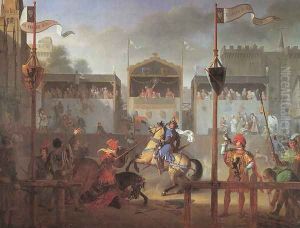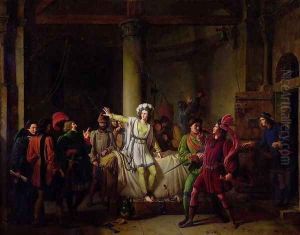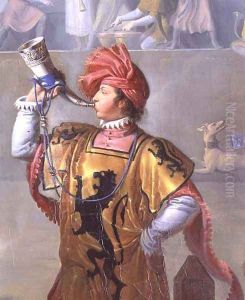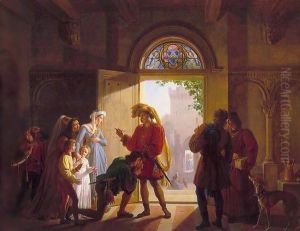Pierre-Henri Revoil Paintings
Pierre-Henri Revoil was a French painter born on June 12, 1776, in Lyon, France. He emerged as a significant figure in the early 19th century, particularly noted for his contributions to the Troubadour style, a movement that sought to revive the spirit and aesthetic of medieval and early Renaissance periods through art. Revoil's work was characterized by its detailed historical accuracy, romanticized portrayal of the past, and meticulous attention to the minutiae of period costumes and architecture, which helped to ignite a broader interest in France's historical heritage.
Revoil received his early artistic training at the École des Beaux-Arts de Lyon before moving to Paris to continue his studies. Under the tutelage of Jacques-Louis David, a leading artist of the time known for his Neoclassical style, Revoil honed his skills and developed his unique artistic voice. Despite David's influence, Revoil's work diverged from Neoclassicism, favoring instead the romantic and nostalgic allure of medieval and gothic themes. His paintings often depicted scenes from French and European history with an emphasis on chivalry, valor, and the intricate social ceremonies of the past.
His career gained significant momentum after the French Revolution and during the Napoleonic era, a period when there was a strong interest in national identity and the glorification of France's history. Among his notable works are 'The Assassination of the Duke of Guise' and 'Henry IV Playing with His Children,' both of which exemplify his talent for storytelling through art and his ability to capture the emotional depth of historical events and figures.
Despite his success, Revoil's popularity waned in the later years of his career as the Romantic movement gained prominence, overshadowing the Troubadour style with its preference for grander, more emotive, and often more dramatic portrayals of historical and mythical subjects. Nevertheless, Revoil's contributions to French art were significant, influencing the development of historical painting and the revival of interest in France's medieval past.
Pierre-Henri Revoil passed away on March 19, 1842, in Paris. Today, his work is recognized for its historical value and its role in the development of 19th-century French art, offering insights into the period's cultural and aesthetic shifts. His paintings can be found in various museums across France, serving as a testament to his dedication to capturing the essence of French history and the enduring appeal of the Troubadour style.
